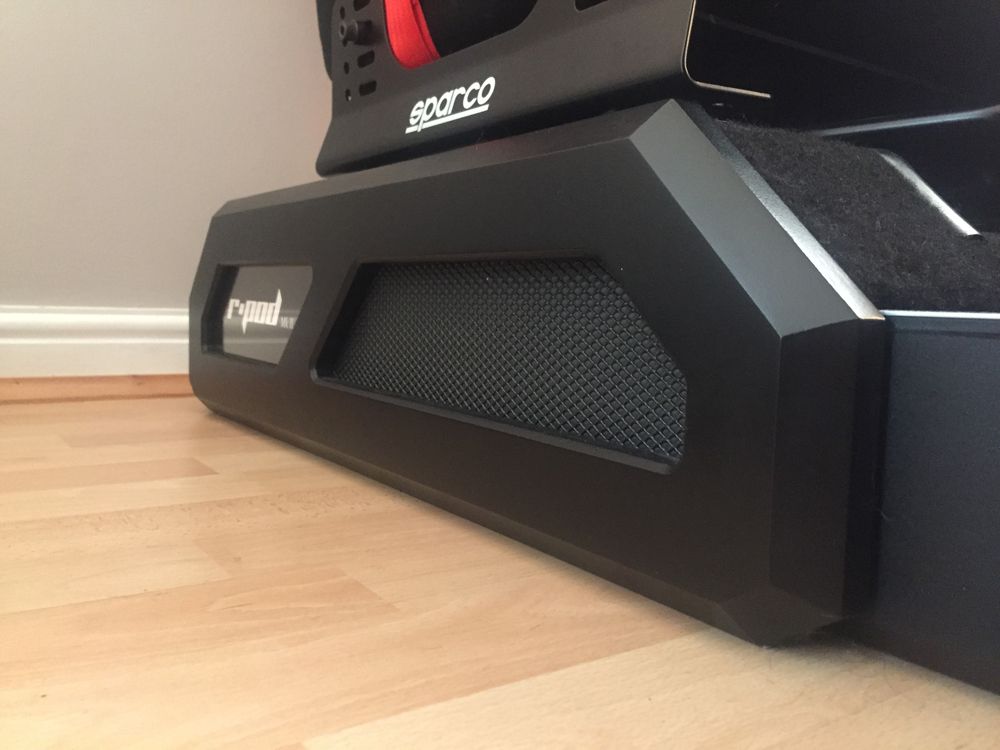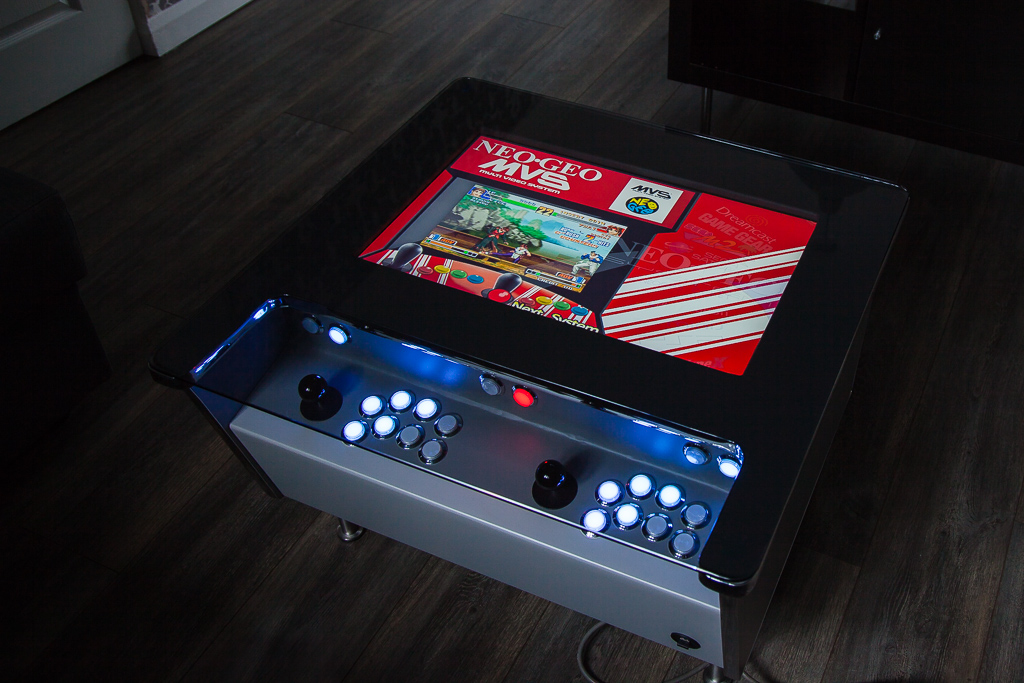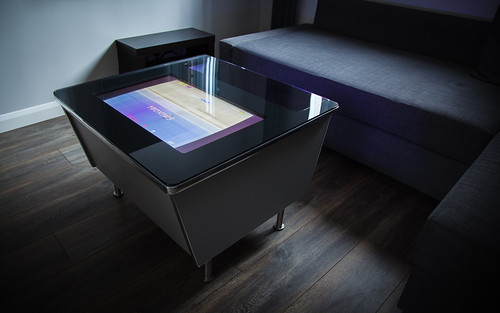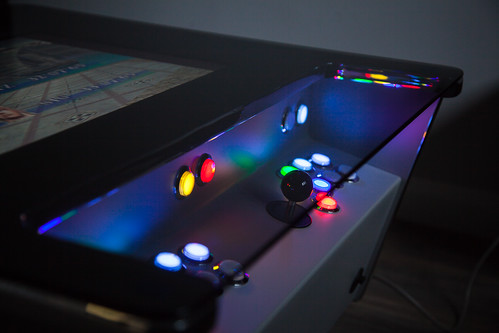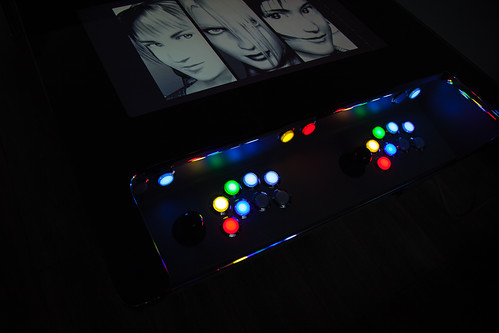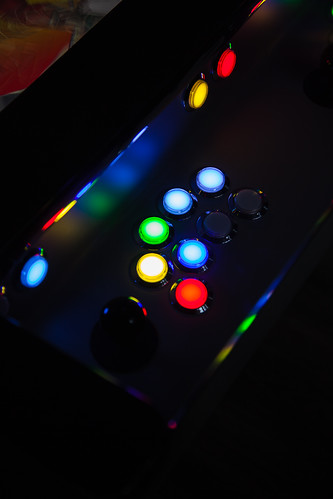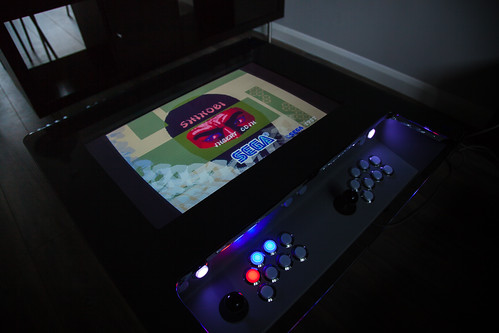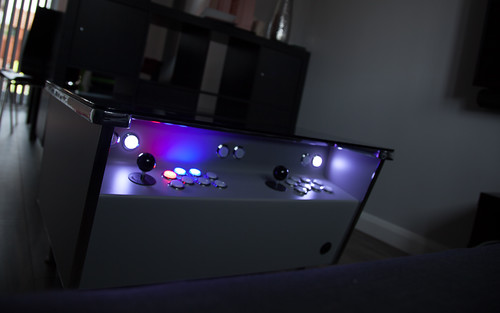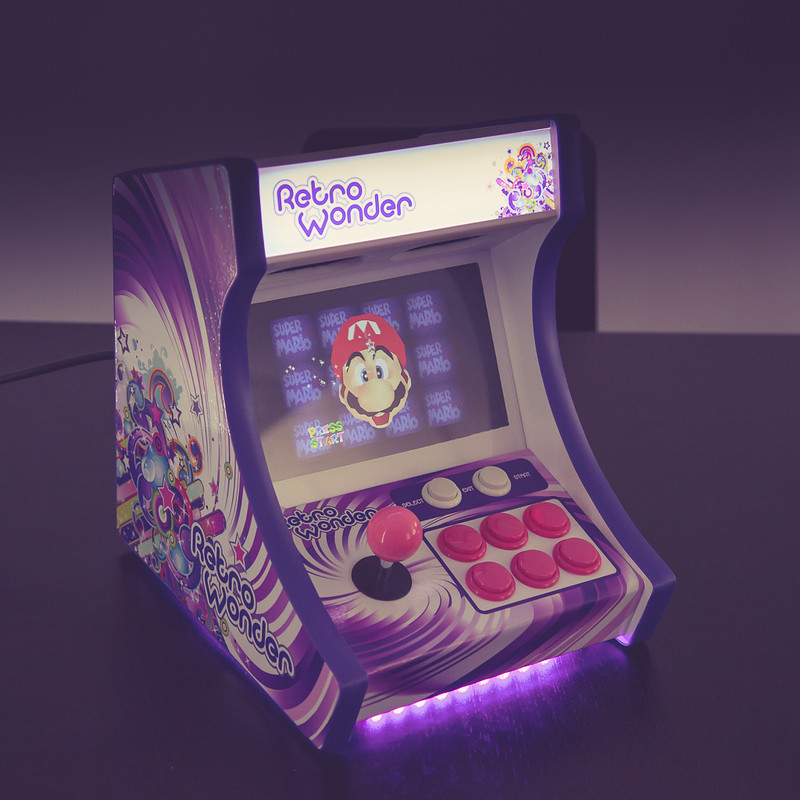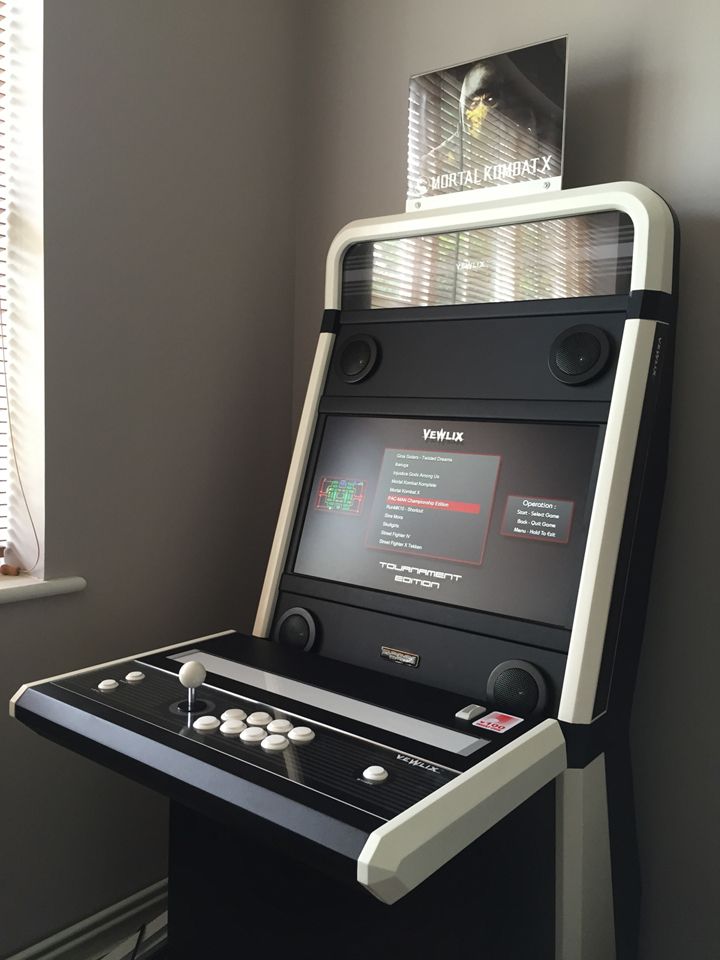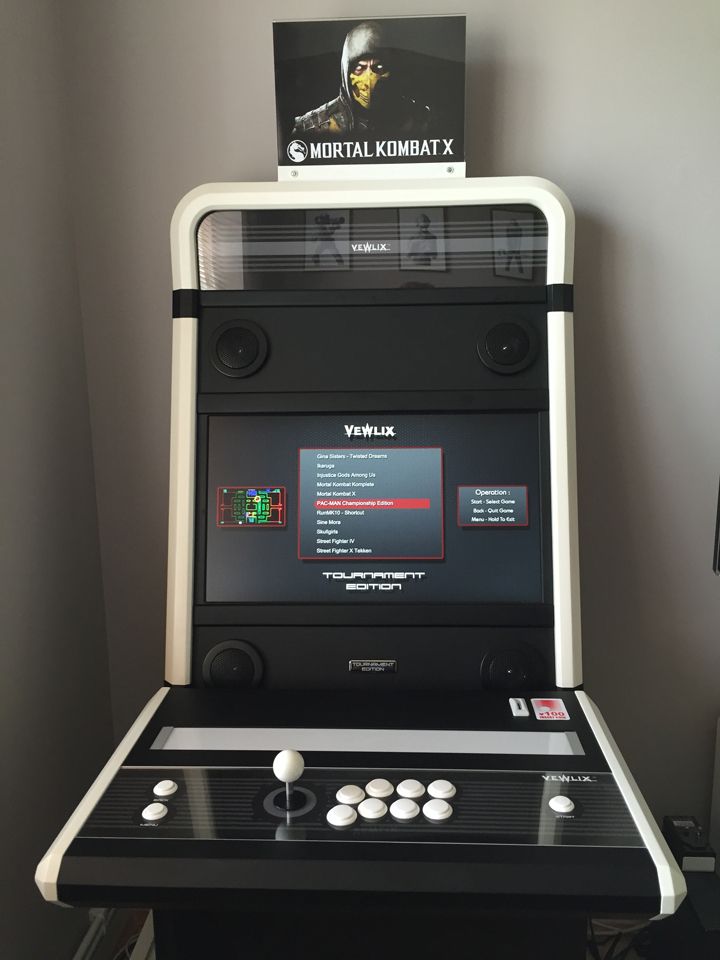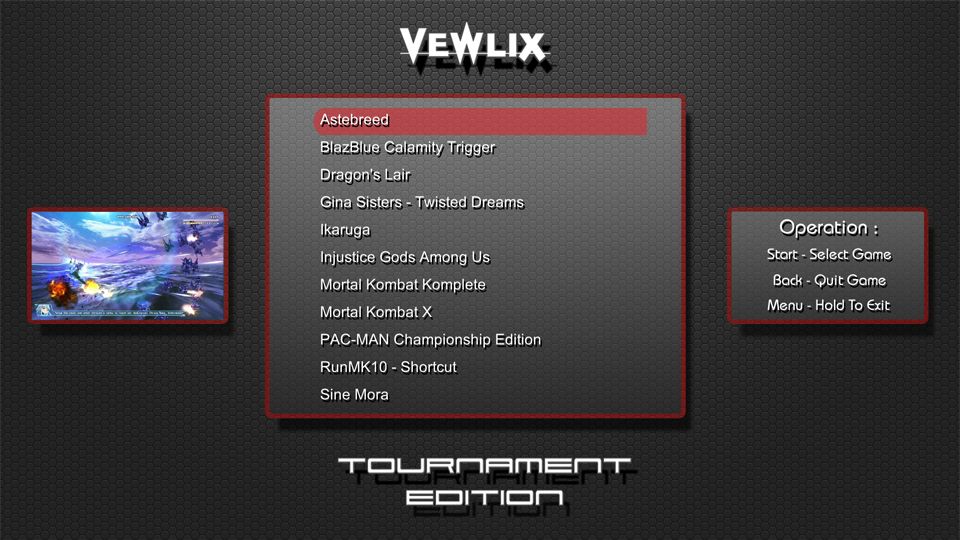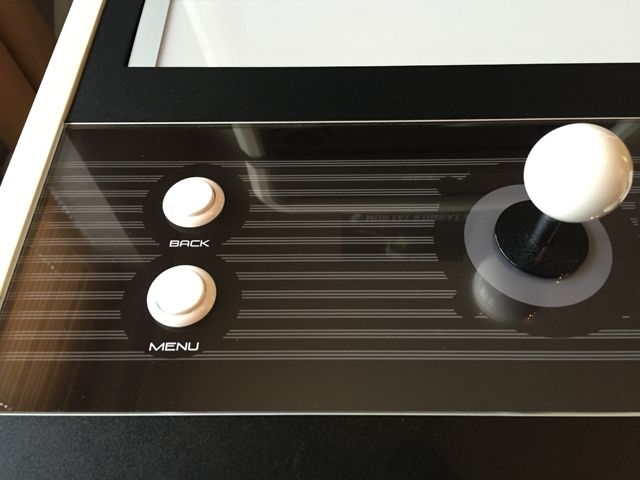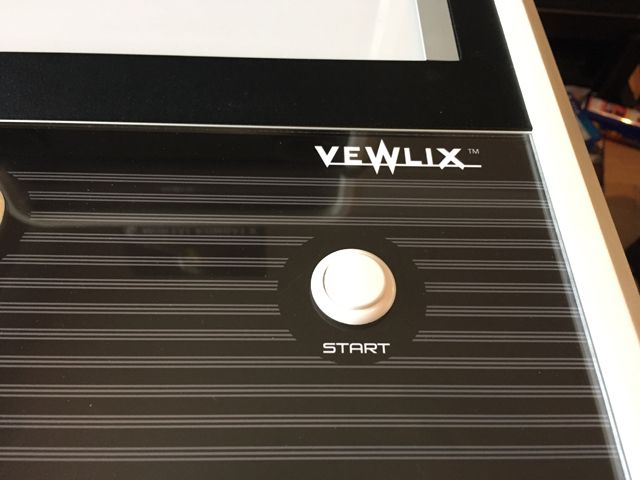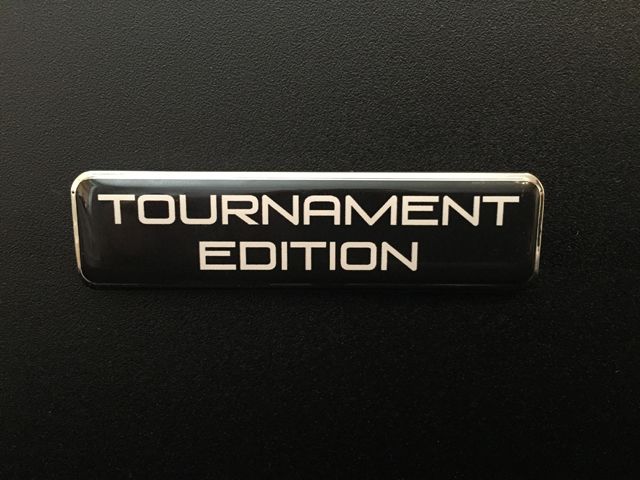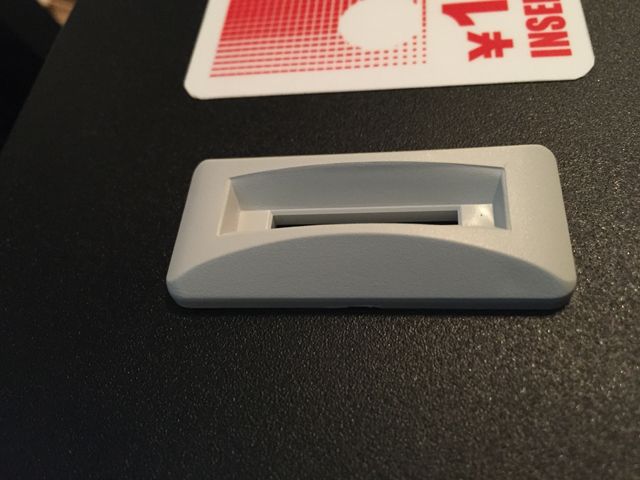I find designing and building stuff hugely rewarding and derive a great deal of pleasure from it. It's really satisfying to take an idea and transform it into something physical.
I originally built the R-Pod MkII rig in 2014 with it taking around 350 hours or so complete. The initial intention was to build it to allow the addition of 2 additional screens but with VR technology advancing rapidly, I decided to put that on hold.
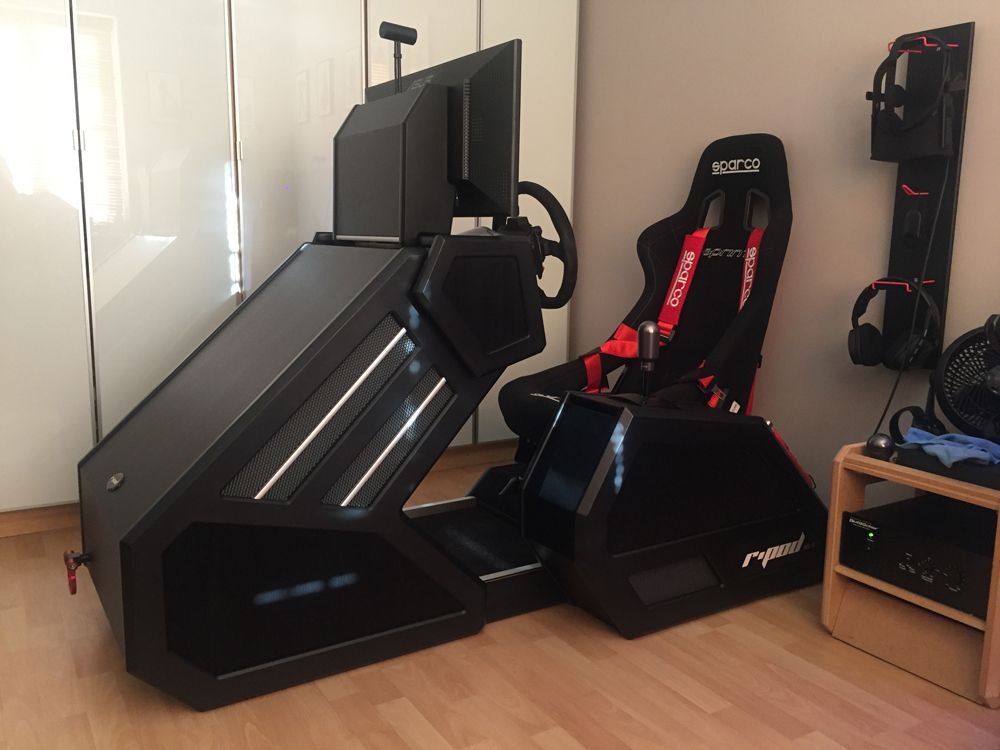
The rig itself is extremely sturdy with minimal flex. This is largely due to double and triple thickness sections (around 3.5cm to 5cm thick MDF) in key areas with the addition of metal bracing on the wheel stem. The result is an extremely heavy racing platform.
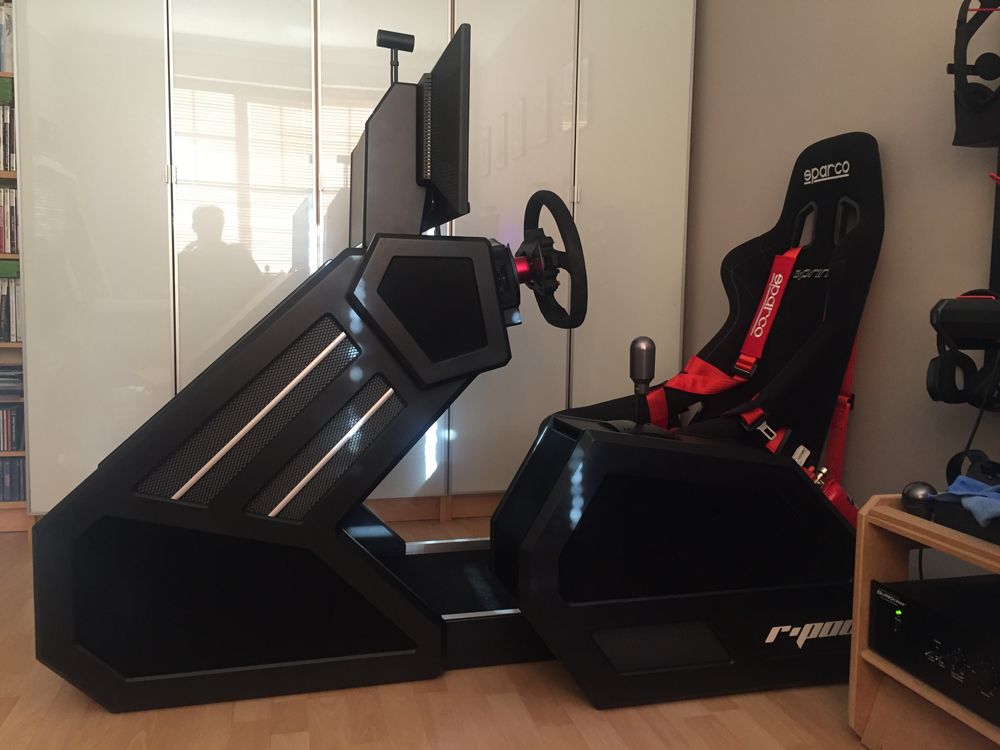
The simulator uses predominantly Fanatec ClubSport series equipment with the V1 wheel base recently updated to the V2. Consideration was given to a direct drive wheel (which I would have preferred) but the cost was just too much. Additional re-work of the dashboard would have been needed as well with cabling also presenting an additional challenge.
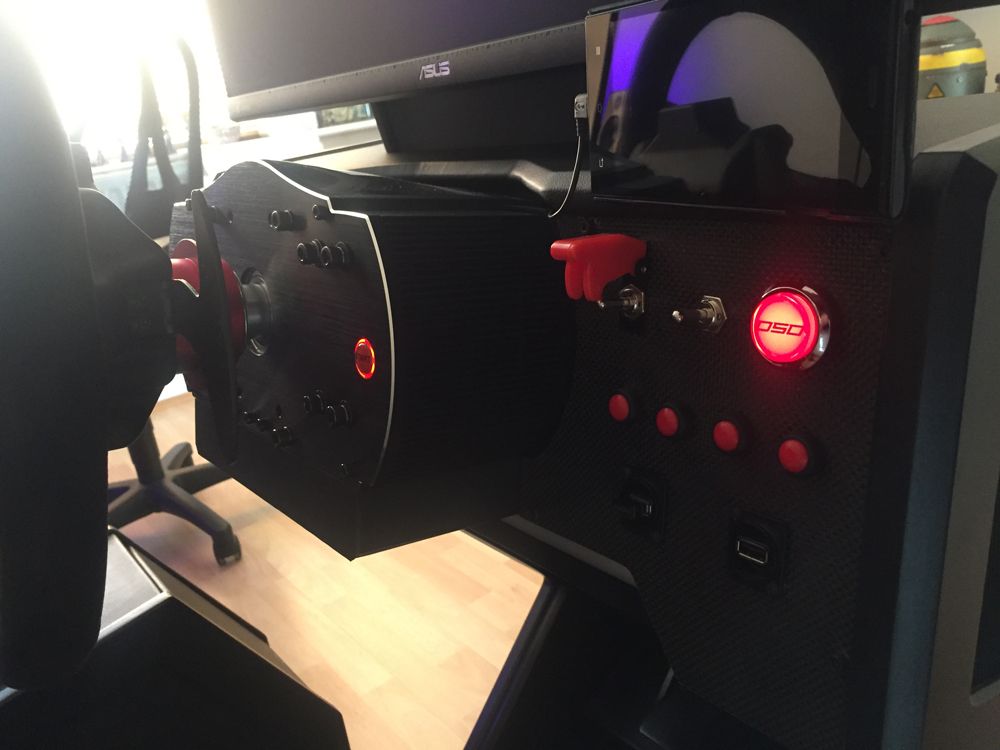
The Version 2 wheel base provides noticeably stronger force feedback than the Version 1 but is also faster and smoother.
The main dashboard fascia panels use a hacked Derek Spear button box and incorporate toggle switches, rotary dials and buttons. They're certainly more challenging to use in VR but are certainly still very usable due to the layout. They're covered in real carbon fibre.
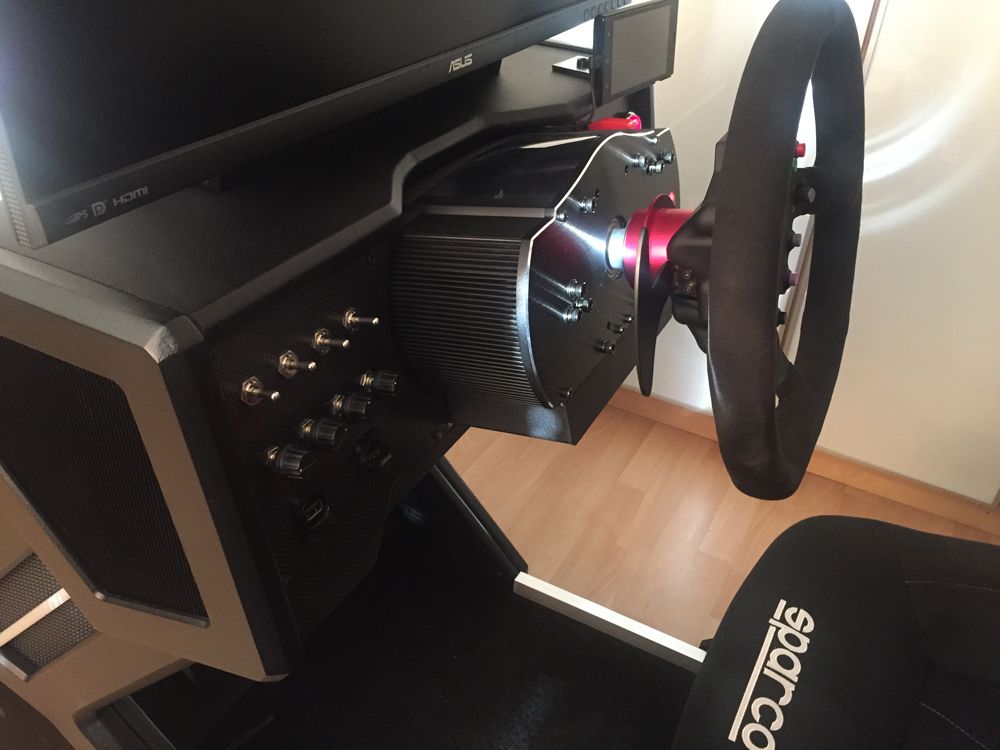
The original screen is still used extensively. This is primarily for running activities outside of the simulation software but also for addressing issues with VR software integration. It's not uncommon for Virtual Desktop software to freeze and require a restart.

An Oculus sensor has been built into the monitor cover with all the cabling passing through ducting which was originall built into the rig. Due to the stability of the platform, there is little to no perceivable movement of the sensor whilst in use.
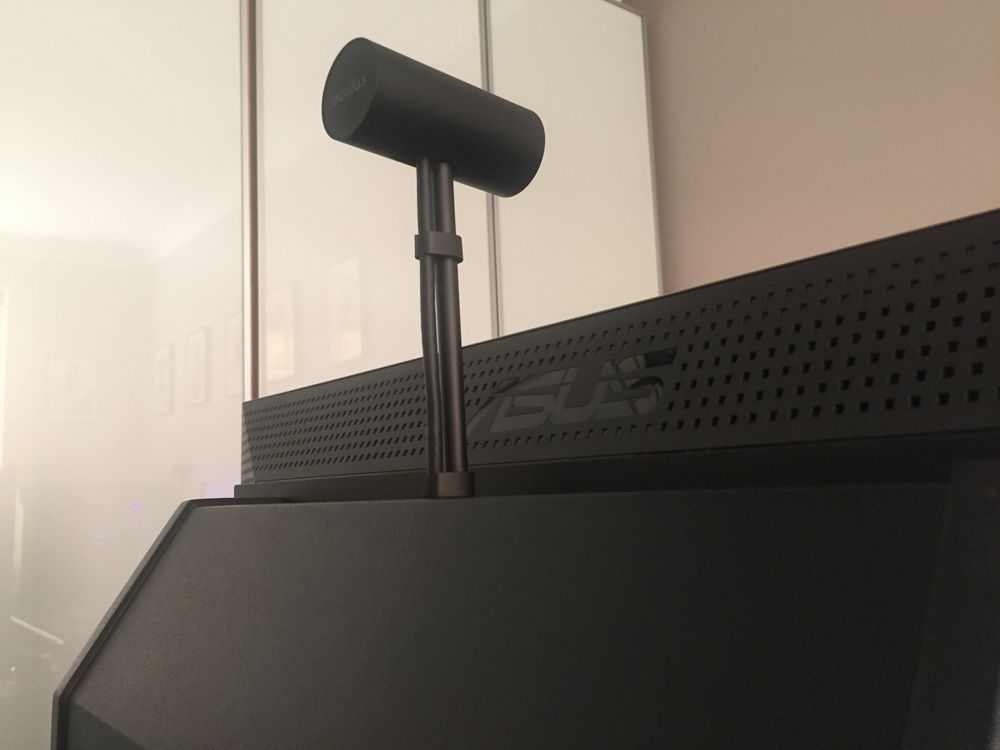
An earlier sim racing rig build had allowed me to establish key issues which needed to be addressed. As with the main rig section, considerable care was given to building as much stability into the simulator as possible. The side pod allowed this to be achieved, again with little to no movement.
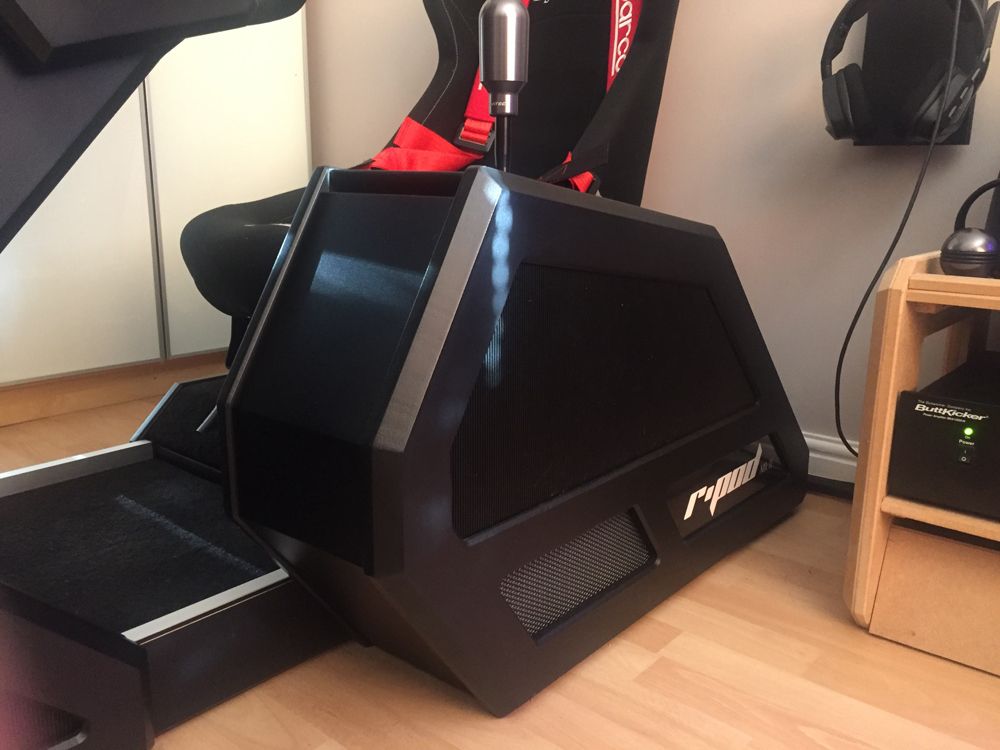
The Fanatec CSS SQ shifter was used in the build. The switch which enables the operational mode to be changed from H-Pattern to Sequential is accessed through a cutout on the inside of the pod. Not as convenient as it could be but it certainly doesn't present any problems.
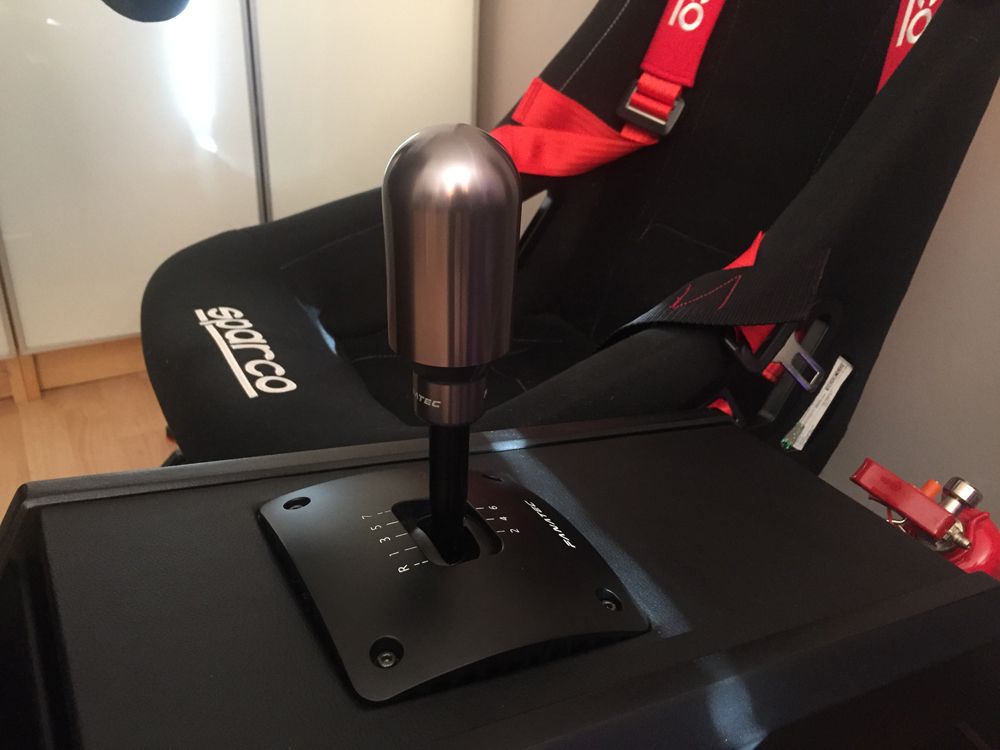
The nose section houses the ClubSport V2 pedals which sit on a platform using seat runners. This allows them to be easily moved backwards and forwards. The seat also uses seat runners for adjustability.
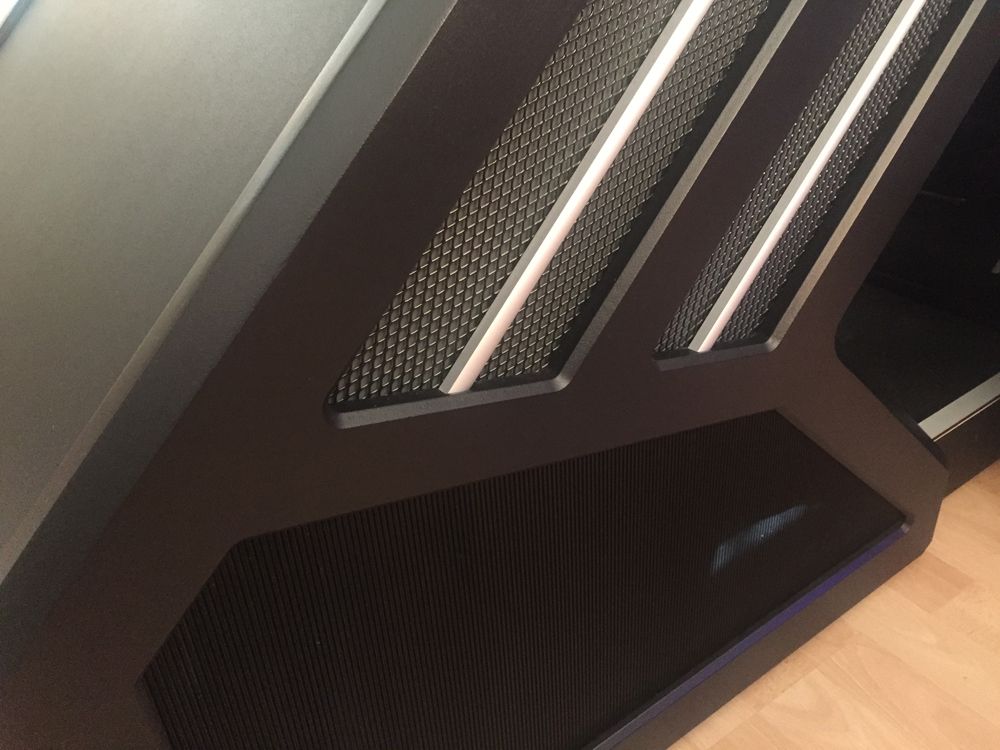
A few additional accessories were built into the design to add some personality. In addition to these, more useful elements were also incorporated including the addition of 4 transducers, running from Simvibe software, for tactile feedback purposes.
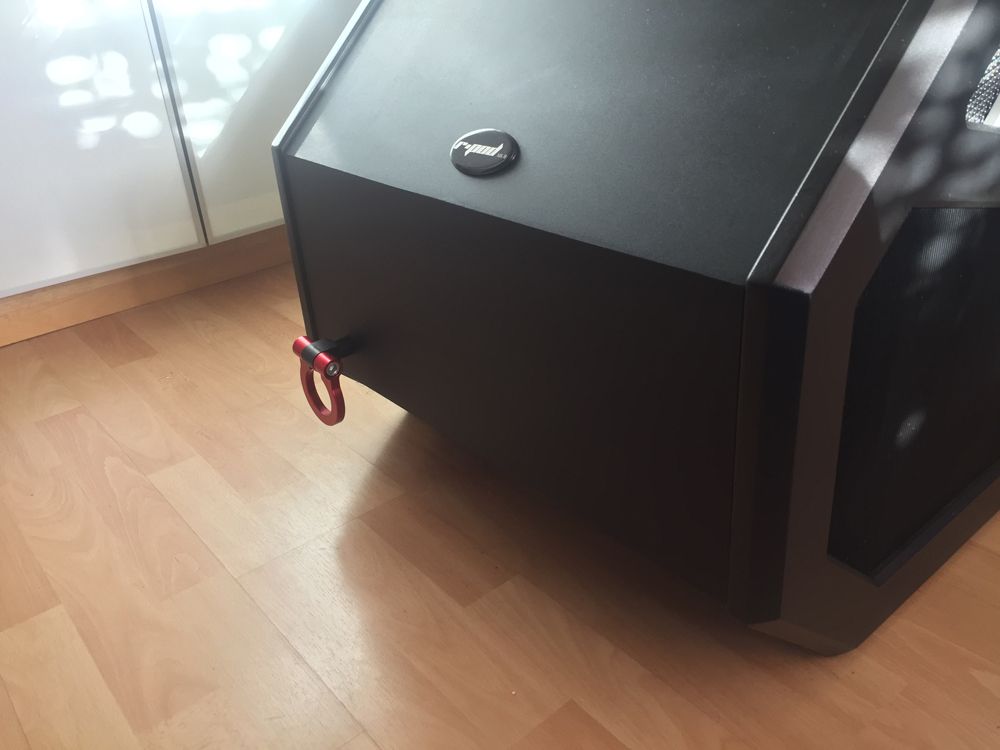
A lot of time was not only spent on the function but also the aesthetics. The project presented a challenge to me and I was intent on creating something to the best of my ability. A very limited tool set was used to create the setup.
